Original URL: https://www.theregister.com/2010/02/02/review_e_book_reader_amazon_kindle_dx/
Amazon Kindle DX
What a difference extra inches make
Posted in Personal Tech, 2nd February 2010 12:02 GMT
Review It took Amazon's Kindle 2 a good while to escape from Uncle Sam's backyard but less than three months more for the international version of the Kindle DX to arrive. Before we even laid hands on the DX we knew it was both bigger and more expensive, but is it any better?
The most obvious difference between the DX and Amazon's lesser Kindles is the larger screen. Like the standard Kindle, the DX uses an E Ink display, but it's a 9.7in unit with a resolution of 1200 x 824 rather than the basic Kindle's 6in, 600 x 800 panel.
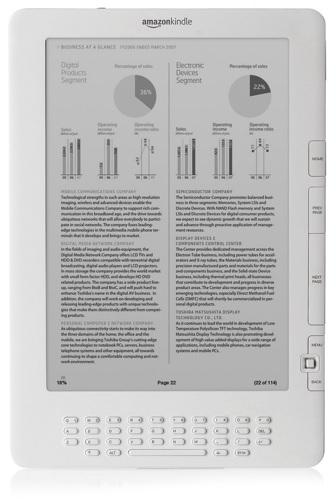
Amazon's Kindle DX: the size e-book readers should be?
Though larger, the DX's screen actually has a lower pixels per inch figure - 150 vs 167 - but the difference is indiscernible to the eye. In every way, the DX's larger screen makes for a much better reading experience than that provided by any other e-book reader we have tested.
Because the DX has followed so hard on the heels of the Kindle 2, Register Hardware found itself with both devices in its clammy grip at the same time, allowing for a direct comparison. While the screens look the same in terms of contrast and shade, there's no doubt that the DX changes pages with a far less obvious grey-to-black-and-back-again flash.
To appreciate just how much more acreage those extra 3.7 inches actually create, you have to put the DX side by side with a 6in e-book reader. It then becomes obvious that the DX's screen has more than two-and-a-half times the surface area. The main advantage of the increased space is that you can crank up the text size but still experience the same structured page layout that you see when reading a traditional book.
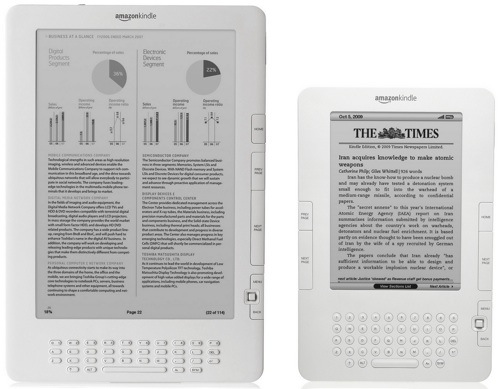
The bigger screen makes a world of difference
Another advantage of the larger screen page became clear when we downloaded the copy of The Lord of the Rings that we purchased as part of our test of the 6in Kindle: the maps were now legible, even the fiddly one giving details of the topography of Gondor.
A further benefit: PDF files are much easier to read. You still can't alter the text size of PDF files, which rather makes a mockery of Amazon's claim that the Kindle has truly native PDF support, but at least the extra screen size means the standard PDF page view is readable which it certainly wasn't on the smaller Kindle.
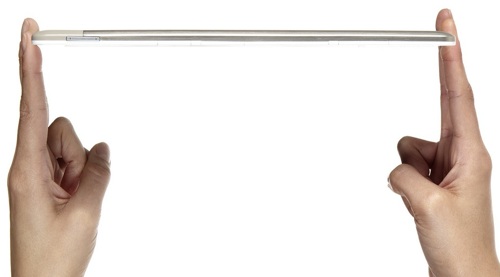
Skinny and not heavy
If you do want to up the text size of your PDF files, you can now just flip the DX onto its side and let the accelerometer change the page view from portrait to landscape fit-to-width which near enough doubles the text size. Incidentally, the accelerometer will flip the page layout through 360° if you feel the need to hold the DX upside down.
Physically, the DX looks like a Kindle that has been on a heavy course of steroids. At 264 x 183 x 9.6mm it's a fair bit bigger than the Kindle 2, but Amazon has maximised the percentage of the front taken up by the screen by the simple expediency of reducing the size of the Qwerty keyboard. Despite the keys now being smaller, rather oddly shaped and lacking a dedicated row of numeric buttons, we didn't find the new design any the less easy to use.
Nor did we miss the Kindle 2's left-hand side page-turn controls, which are absent from the DX. Otherwise, the layout of the DX is identical to that of the Kindle 2, so you get a micro USB port at the bottom; a 3.5mm audio socket and on/off switch at the top; a pair of rather better sounding speakers than those fitted to the Kindle 2 around the back; and a row of controls along the right-hand edge of the unit to navigate the various system menus, turn pages and adjust the volume.
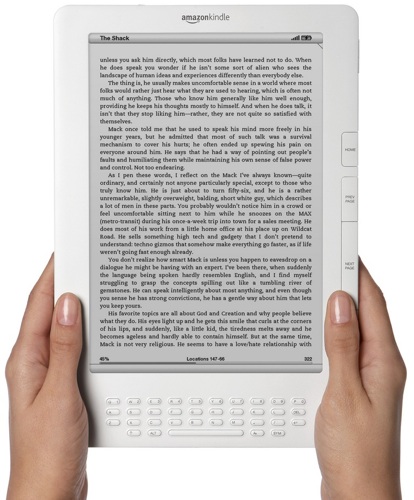
The screen dominates the DX's face
Amazon has also stuck with the basic cosmetic style of previous Kindles so you can have any colour you want as long as it's white. Thankfully, the increased size of the DX hasn't resulted in any chassis flex and the new device is every bit as solidly bonded together as its smaller sibling.
At 546g - a hefty 250g more weighty than the 6in model, but still less than the 730g 3G Apple iPad - the DX is certainly one of the heavier e-book readers about. But since it's also lighter than the average hardback book, that really makes no odds.
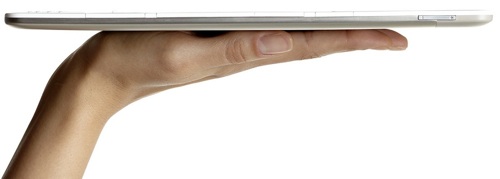
Can also be used as a tea-tray?
The DX comes with 4GB of storage - or 3.3GB after the operating system has taken its bite - which is twice what the Kindle 2 provides and goes some way towards ameliorating the lack of memory card expansion.
Of course, as with the Kindle 2, you can store purchased books on Amazon's servers and re-download them when needed. With a MobiPocket file of Dumas' The Three Musketeers taking up less than 800KB, and the AZW file of The Lord of the Rings occupying just over 3.3MB, that 3.3GB is sufficient to house a rather big library of some very long books.
Many technical strengths and weaknesses are carried over from the Kindle 2. So the text-to-speech facility is laughably bad, the music player is so basic we can hardly bring ourselves to call it a music player, the web browser doesn't work outside of the good 'ole US of A, and there is no support for the ePub e-book format, while audio file support of limited to MP3 and Audible. Common text files can be read on the DX but doing so involves e-mailing them to Amazon for automatic transcoding, which is a bit of a palaver.
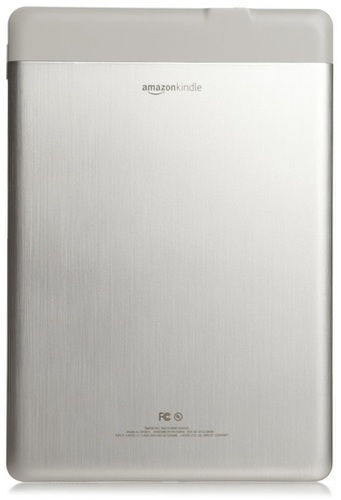
Just as shiny as an iPad?
On the up side, the built-in HSDPA wireless module lets you buy books from Amazon without recourse to a PC, and all the basic e-book reader functions are well covered, including the ability to place multiple bookmarks in multiple books, and make and attach notes to book pages.
According to Amazon, the DX will last as long on a full charge as the Kindle 2 does: a week with the wireless left radio on, two weeks with it off. That seems about right - we noticed no discernible differences in battery life between the two devices.
Before you start adding shipping costs, the DX will set you back $489 - £308 at the current exchange rate - or, put it another way, $230 (£145) more than the standard Kindle. That is a fair old chunk of change for an e-book reader, even one with a huge screen.
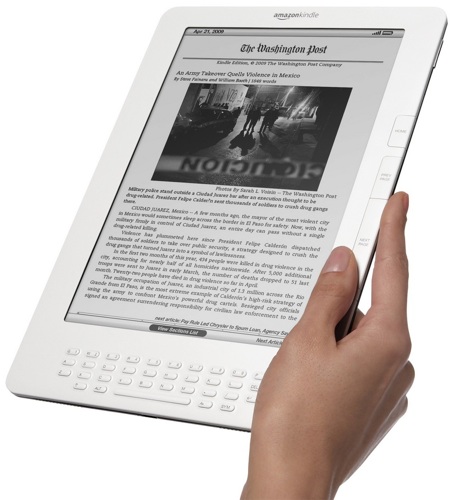
Nice... but pricey
It also means the DX is pretty much the same price as the soon to arrive entry-level iPad. While the the iPad is not a dedicated e-book reader - making direct comparisons pointless - both devices are large screened handheld electronic gadgets competing for a finite discretionary consumer spend.
Another potential fly in the DX's ointments is Sony's hopefully-coming-to-Blighty-soon $399 (£252) Reader Daily Edition, which has a 7.1in, 600 x 1024 screen, 3G wireless communication, and PDF file support complete with variable text sizes and reflow.
Verdict
Spend time with the 9.7in Kindle DX and your won't ever want to go back to a 6in e-book reader but blimey you've to pay a hefty price to be paid for such luxury. If money is no object, you won't regret the outlay, but you may want to consider waiting to see if the arrival of Apple's iPad causes Amazon to re-think its pricing strategy. ®
More E-Book Reader Reviews...

Amazon Kindle |

iRiver Story |

Sony Reader PRS-300 Pocket Edition |

Sony Reader PRS-600 Touch Edition |